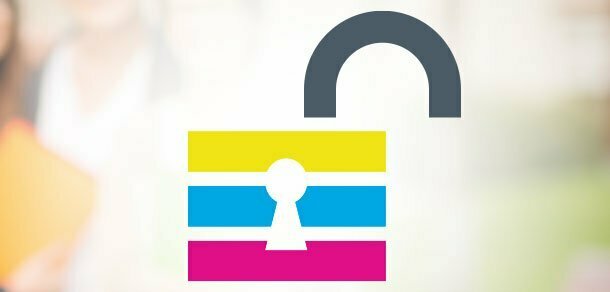
Securing cardstock, ribbons, and printers key to preventing theft and ID fraud
Purchasing security hardware may not be the only way to safeguard card office materials. For the University of Nebraska-Lincoln’s NCard Office, proper office management has proven to be the best defense.
“We do have a locking cabinet in which we keep cardstock, but all employees have access to the keys and the cabinet is unlocked during business hours,” says Julie Yardley, manager of the NCard Campus Account Program at the University of Nebraska-Lincoln. “All employees, including student workers, have access to the card materials and printers, as they need that access to do their job.”
The NCard Office does not lock up the ribbons, cardstock or printers, explains Yardley. “The ribbons and other ID materials are stored in cabinets in the back area of our office where there is no public access,” she says. “Every employee is responsible to keep non-employees from entering the back area of our office, and during non-business hours our office is locked.”
Otherwise Yardley keeps track of the cardstock and printing supplies. “I can run a report of all cards produced – daily, weekly or monthly – whatever time frame I need,” she explains.
She also keeps track of all cards produced for free, for example, failed cards, name changes and incorrect prints. “Employees are responsible for noting the reason and then putting these cards in a collection box for me to monitor,” she explains.
Unfortunately there is not a checklist or set of best practices for card offices looking to better lock down sensitive ID materials. There are, however, plenty of guides available to help craft an effective security policy.
“Today, there isn’t an out-of-the-box solution that folks can purchase that does exactly what card office managers need,” says Degan. “They need to piece-meal the system together themselves, but the anchor point is typically the locker, safe or containment area.”
After that, a card office should incorporate an inventory system and have office personnel document when they remove items from the locked area, explains Degan. “Years ago, Fargo Electronics offered an all-in-one ID management locker called SecureVault, but it didn’t really take off and it’s no longer available.”
The best practice is to enable the card office manager to divvy out who can and can’t pull from locked supply cabinets, says Degan. “Lock and key is the simplest form, but you could incorporate a mini access control system within your own office that could sync with existing cards,” he says. “This would enable the card office manager to have an audit trail – without keeping a manual log – of who has used their card and pin to access supplies.”
“If card access control is used on campus, the card office is a perfect location to use it to track who enters the location and the storage cabinet or closet,” adds Emery.
There are three common types of fraudulent IDs – counterfeits, genufeits and modifeits – and a secure issuance environment should guard against each variety. Securing access to printers and consumables is the most important means to prevent against genufeits, fakes that are created using genuine raw materials.
Counterfeits – IDs that are not produced by the actual issuer, but are designed to pass for a legitimate document. Primary prevention methods include visual security features such as holograms, machine-readable data, advanced ID technologies, and other methods that make it challenging or expensive to duplicate.
Genuifeits – IDs that are produced fraudulently, but using genuine raw materials obtained from the issuer. They can either be personalized on issuer’s own equipment or by using the misappropriated supplies on similar equipment. Primary prevention methods include sound security policies and procedures within the issuing organization.
Modifeits – IDs that are produced fraudulently by altering authentic IDs produced by the issuer. Primary prevention methods include layered visual security methods, holographic laminates, advanced ID technologies, and other methods that render that make attempts at tampering evident.
Depending on the hardware, a card office could purchase equipment with built-in security features. “Many card printers now come with lockable card hoppers. This is a great feature to have when you load your card printer to make sure individual cards are not removed,” explains Emery. “And having the key with only designated managers can help increase security of the cards that are in the actual production run.”
As for provisioning access to materials, those responsible for card printing will require access to supplies to accomplish their job, says Emery. “But this does not necessarily mean they need access to all supplies. For example, once a ribbon is completed or is running out or the hopper is getting low on cards, a specific manager with access to the locked supplies can obtain additional items for those printing the cards.”
Ultimately, locking up a card office’s valuable materials is a preemptive measure to the worst-case scenario. While the card office may not be a common target for theft, it’s vital to be prepared.
“It’s important to remind folks in our community that just because they are producing a student ID card doesn’t mean that someone else can’t use their printer supplies to make something more official like a government ID or driver license,” says Degan. “All it takes is a little expertise and know-how and it’s possible.”




